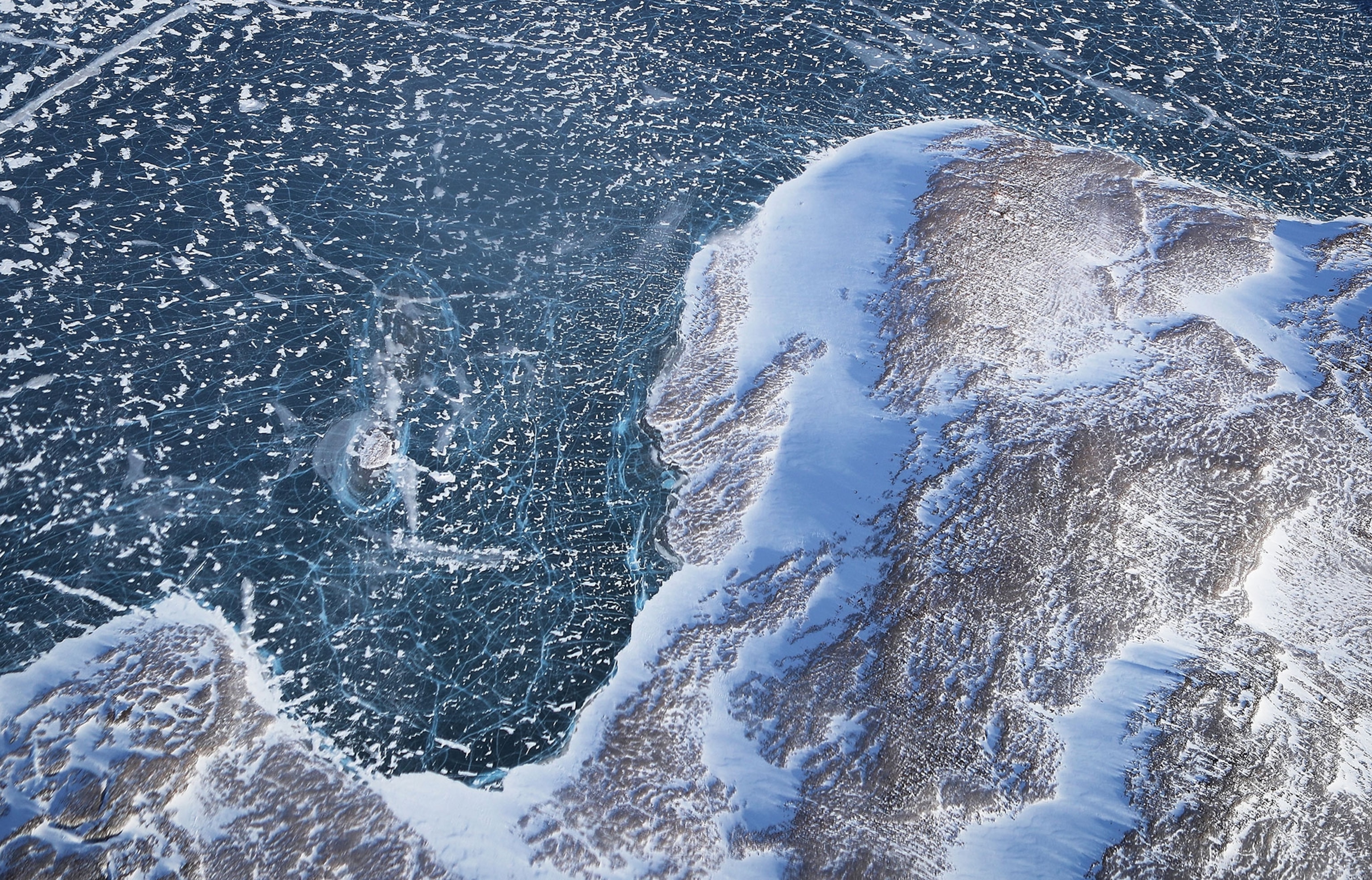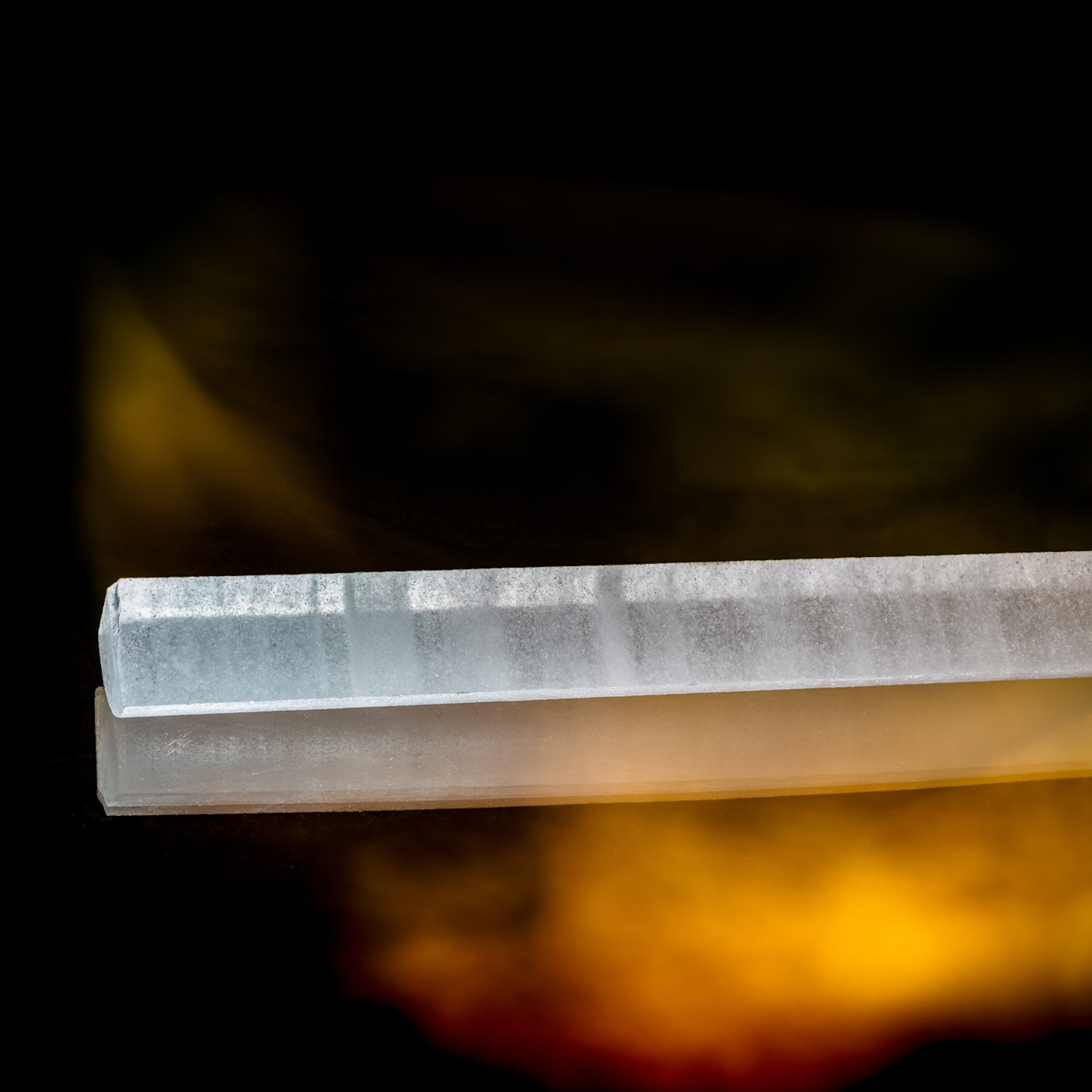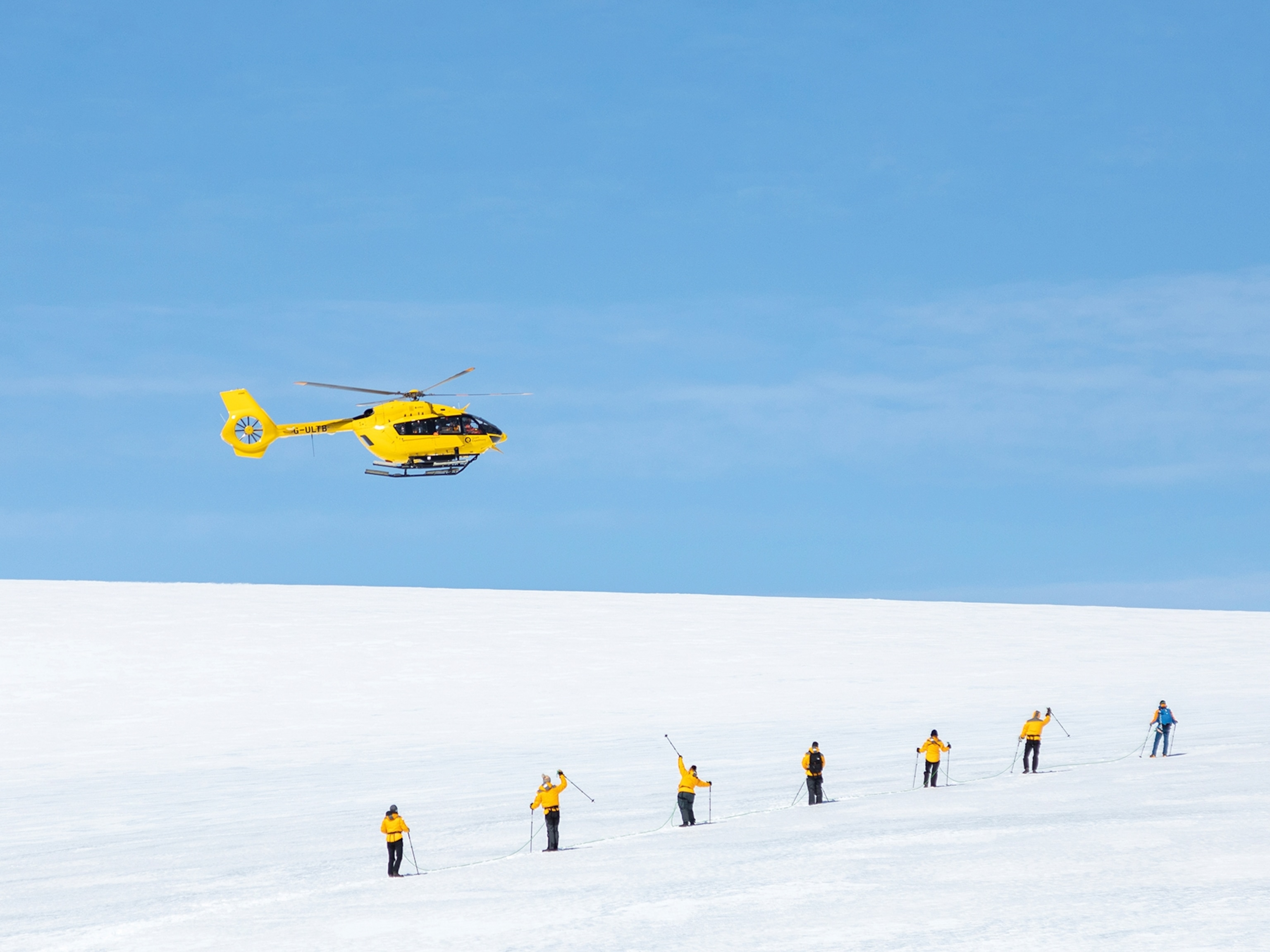
Something strange is happening to Greenland's ice sheet
What should be like a snowcone is becoming more like a popsicle, speeding up the runoff from the melting ice sheet.
When the remnants of Europe’s second summertime heat wave migrated over Greenland in late July, more than half of the ice sheet’s surface started melting for the first time since 2012. A study published Wednesday in Nature shows that mega-melts like that one, which are being amplified by climate change, aren’t just causing Greenland to shed billions of tons of ice. They’re causing the remaining ice to become denser.
“Ice slabs”—solid planks of ice that can span hundreds of square miles and grow to be 50 feet thick—are spreading across the porous, air pocket-filled surface of the Greenland ice sheet as it melts and refreezes more often. From 2001 to 2014, the slabs expanded in area by about 25,000 square miles, forming an impermeable barrier the size of West Virginia that prevents meltwater from trickling down through the ice. Instead, the meltwater becomes runoff that flows overland, eventually making its way out to sea.
As the ice slabs continue to spread, the study’s authors predict more and more of Greenland’s surface will become a “runoff zone,” boosting the ice sheet’s contribution to global sea level rise and, perhaps, causing unexpected changes.
“We're watching an ice sheet rapidly transform its state in front of our eyes, which is terrifying,” says lead study author Mike MacFerrin, a glaciologist at the University of Colorado, Boulder.
A ‘turtle shell’ for ice
It’s easy to think of Greenland as a solid, impenetrable hunk of ice. But in reality about 80 percent of the ice sheet’s surface is like a snowcone: A dusting of fresh snowfall covers a thick layer of old snow, called firn, that’s slowly being compressed into glacier ice but still contains plenty of air pockets. When the top of this snow cone melts in the summer, liquid water percolates down into the firn, which soaks it up like a 100-foot-thick sponge.
MacFerrin and his colleagues got their first hint that the firn may be losing its absorbency in the spring of 2012, when they were drilling boreholes through the firn in southwest Greenland. They started finding dense, compacted layers of ice in core after core, just below the seasonal snow layer. It was, MacFerrin says, as if a “turtle shell” had formed over the firn.
MacFerrin and his colleagues immediately wondered whether that shell might be preventing meltwater from percolating into the firn.
“That was May of 2012,” MacFerrin says. “And July was this record-breaking melt year, and we got our answer very quickly.”
That summer, for the first time on record, meltwater from this part of Greenland visibly started to flow away as runoff.
Realizing they had witnessed something significant, the researchers set about drilling more cores over a larger region to see how extensive the ice shell was. They discovered that it spanned a transect 25 miles long and was having widespread effects on local hydrology.
Those findings, published in 2016 in Nature Climate Change, were the springboard for the new study. Using radar data from NASA’s IceBridge airborne campaign, as well as ground-based surveys, MacFerrin and his colleagues have now created a first-of-its-kind map of ice slabs across the entire surface of Greenland.
Based on modelling results, the researchers think the shell began to form and spread widely in the early 2000s. As of 2014, it covered some 4 percent of Greenland’s surface, according to the new analysis. Every summer that extensive melting occurs, it gets thicker and spreads inland to colder, higher ground.
“Every handful of years, these big melt summers are doing a number on the firn,” MacFerrin says. “That’s causing this whole process to grow inland pretty quickly.”

Sea level rise and unexpected consequences
Ice slabs have already caused Greenland’s runoff zone to expand by about 26 percent, according to the new study. So far the additional runoff has only added about a millimeter to global sea levels. Greenland now contributes a little under a millimeter per year to rising sea levels, through a combination of icebergs breaking off glaciers and melt occurring at the surface and base of the ice sheet.
But if Greenland’s surface hardens more, runoff could rise dramatically. Under a worst-case scenario where carbon emissions continue to climb until the end of the century, the researchers calculated that ice slab proliferation could add up to 3 inches of sea level rise by 2100, boosting the ice sheet’s overall sea level rise contribution by nearly a third. In both a middle-of-the-road scenario where emissions peak by mid-century and the high emissions one, the amount of runoff from Greenland’s interior roughly doubles by century’s end.
But more runoff is only one potential consequence of the transformation taking place in Greenland’s ice. Kristin Poinar, a glaciologist at the University of Buffalo who wasn’t involved in the study, pointed out that slabs of solid ice aren’t nearly as reflective as bright white snowfall.
“And so, if we start getting these ice slabs forming near the ice sheet’s surface, it could potentially...cause the ice sheet to absorb more solar radiation and warm up,” she says. “And that would create more ice slabs.”
And runoff from ice slabs doesn’t have to flow into the ocean, said Indrani Das, a glaciologist at Columbia University who wasn’t involved in the study. She worries about how it could seep into the large crevasses that exist at lower elevations on the ice sheet. From there, the runoff could, potentially, flow all the way down to bedrock, lubricating the zone where the ice makes contact with it.
“That could make the ice sheet flow faster,” Das says, which could cause glaciers to spill their contents into the ocean more quickly, like ice cream sliding off a piece of cake.
To Poinar, the most significant contribution of the new study is that it will allow scientists to improve their projections of future sea level rise, giving coastal communities the information they need to prepare. At the same time, the study highlights the fact that the more carbon we spew into the atmosphere, the more we’re likely to transform Earth’s northern ice sheet in insidious and unexpected ways. And that could have consequences that are difficult to anticipate.
“We have never observed an ice sheet behaving this way before,” Poinar says. “It’s unprecedented in human scientific history.”








